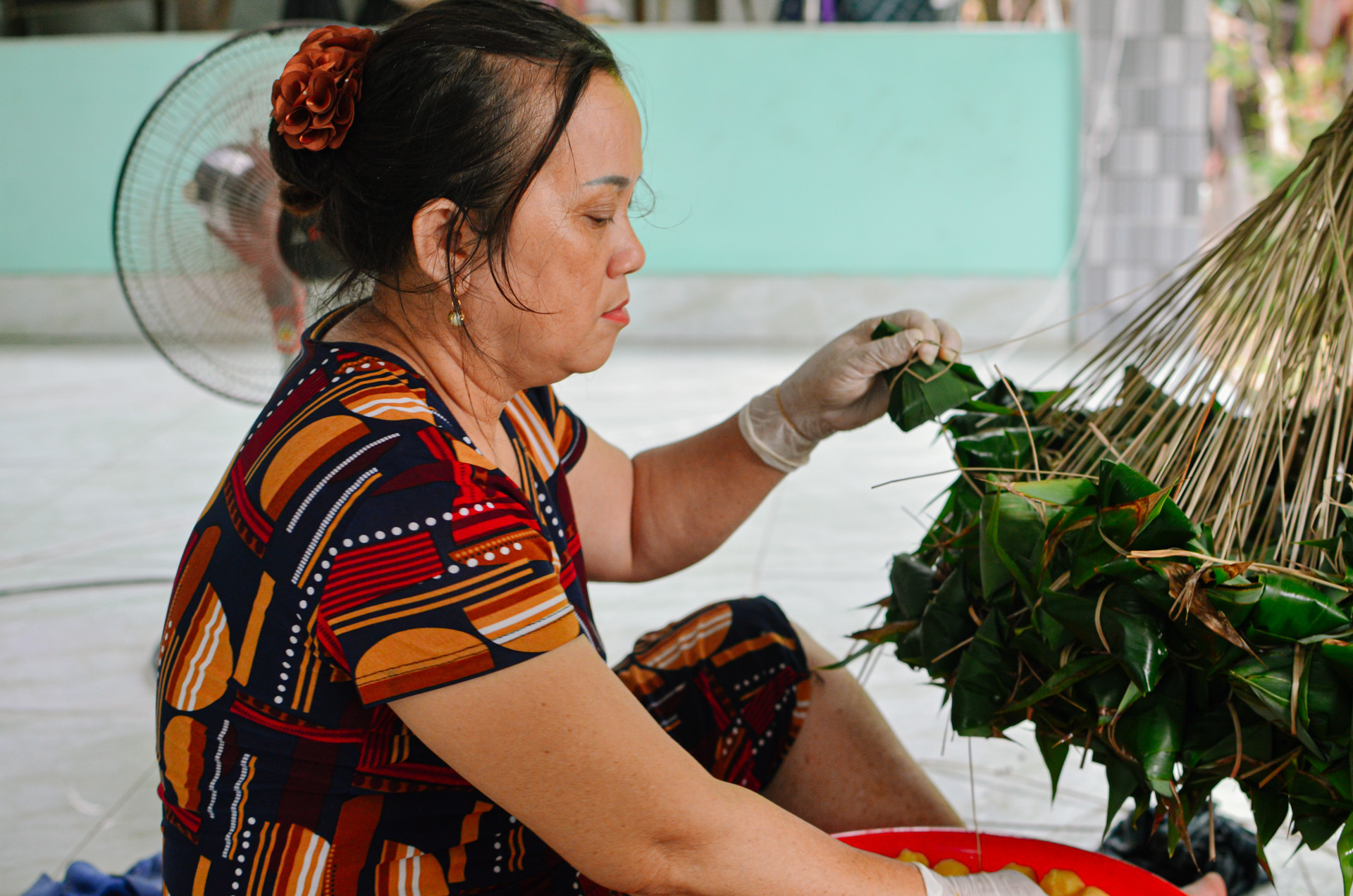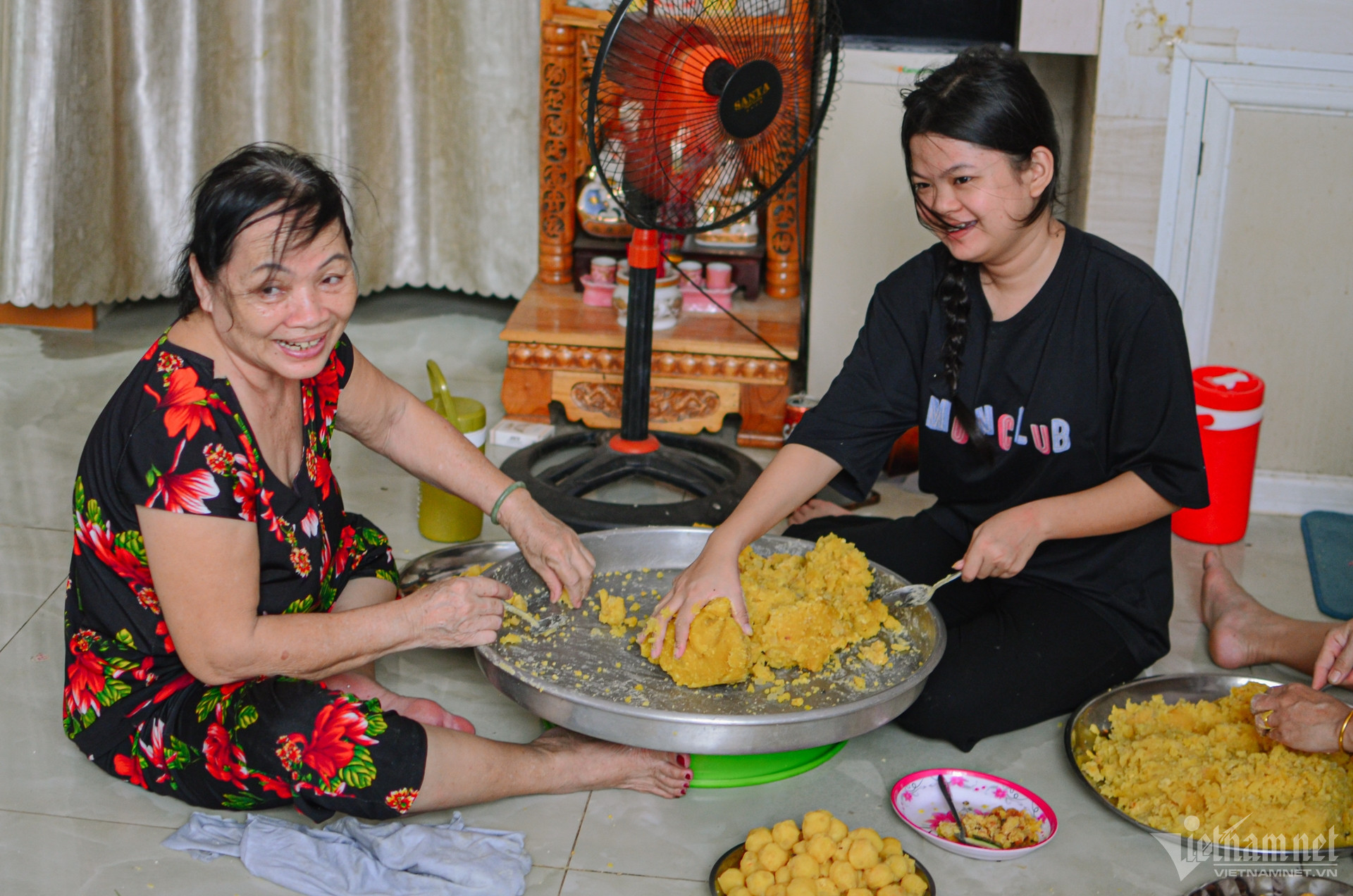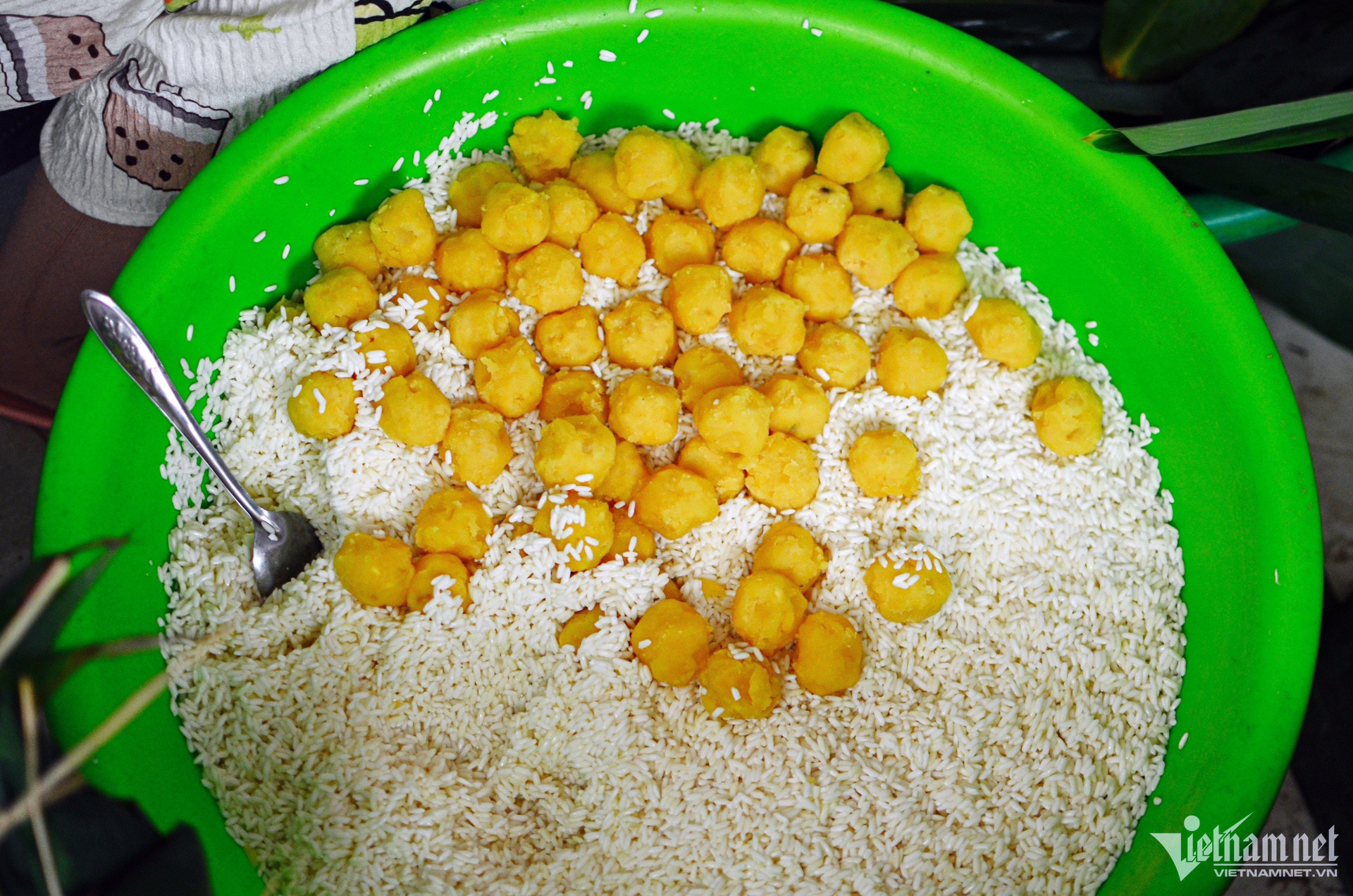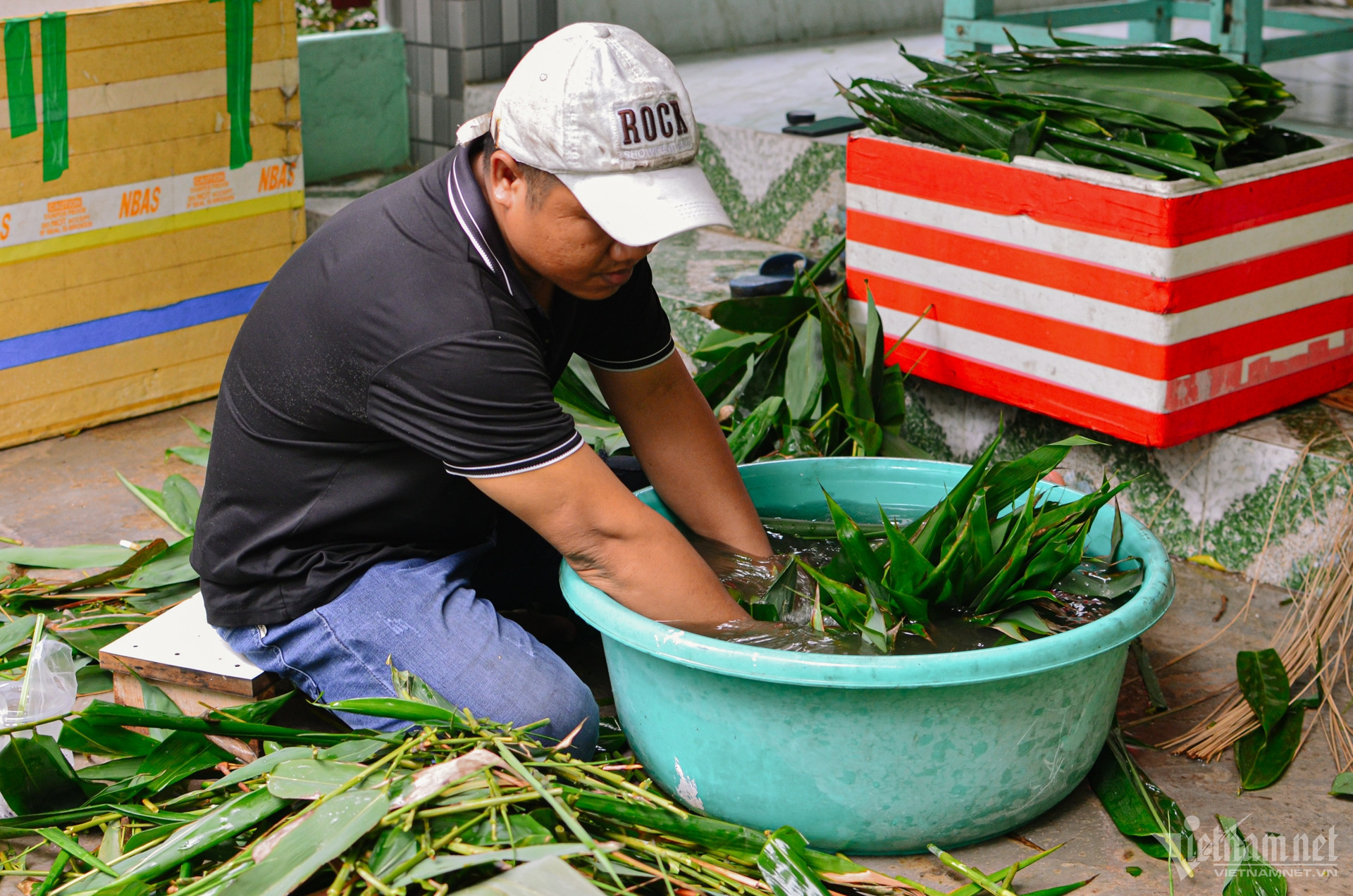In a narrow alley at the end of Pham The Hien Street (District 8, Ho Chi Minh City), a small neighborhood of about 20 households is bustling to produce bamboo leaf-wrapped rice dumplings for the market.

"This neighborhood has been making rice dumplings for many years, supplying them throughout Ho Chi Minh City during the Doan Ngo festival. On regular days, I work in a different profession, but about a week before Doan Ngo, I take a break to make rice dumplings," said Mrs. Nguyen Minh Huong, a local resident.
 |
 |

The main ingredient for making bamboo leaf-wrapped rice dumplings is glutinous rice. Before being used to wrap the dumplings, the glutinous rice is soaked in ash water for half a day to a day.
The filling primarily consists of green beans, which are boiled with sugar over a fire. Once cooked, the green beans are mashed, mixed with other ingredients, and formed into small balls.

The bamboo leaves used to wrap the dumplings are large, green, and thoroughly washed.

To create the delicious, chewy bamboo leaf-wrapped rice dumplings, meticulousness and skill are required from the maker.
When wrapping the dumplings, the bamboo leaves are folded into a funnel shape, with a spoonful of glutinous rice placed at the bottom, followed by the filling and an additional layer of glutinous rice on top. The dumplings are tightly bound with strings.
Once wrapped, the dumplings have a conical shape, roughly the size of an adult's fist. Mrs. Tran Thi Lan said: "Every day, I can wrap over 1,000 dumplings. The payment is 500,000 VND."

The dumplings are then stacked in a pot, filled with water, and boiled for 3 to 4 hours. The locals here maintain the tradition of boiling the dumplings over a wood stove to preserve their distinctive flavor. During peak days, people in this alley boil around 15,000 dumplings per day.
After cooking, the dumplings are removed, soaked in cold water, and left to cool.

The finished dumplings are brought to market stalls, sold wholesale to retailers, or displayed for sale along the small alleys on Pham The Hien Street. On average, a dozen dumplings fetch a price ranging from 50,000 to 60,000 VND.
The Doan Ngo Festival, also known as "Tết giết sâu bọ" or "Festival for Killing the persons' inner insects," holds a pivotal position in Vietnam's cultural calendar.
The name "Tết giết sâu bọ" originates from its association with the agricultural cycle, as farmers utilize this occasion to eradicate pests and commence planting for the upcoming season. The festival falls on the 5th day of the 5th lunar month, symbolizing the start of a new agricultural cycle.
Traditionally, families rise early on this day to consume fermented sticky rice and fruits, believed to cleanse the body of undesirable "parasites." Worship ceremonies are conducted at noon, marking the hour of the Ngo.
Two iconic dishes of Doan Ngo Festival are banh u and com ruou or "rice wine," consists of small balls of fermented rice soaked in wine.
Ngoc Diem